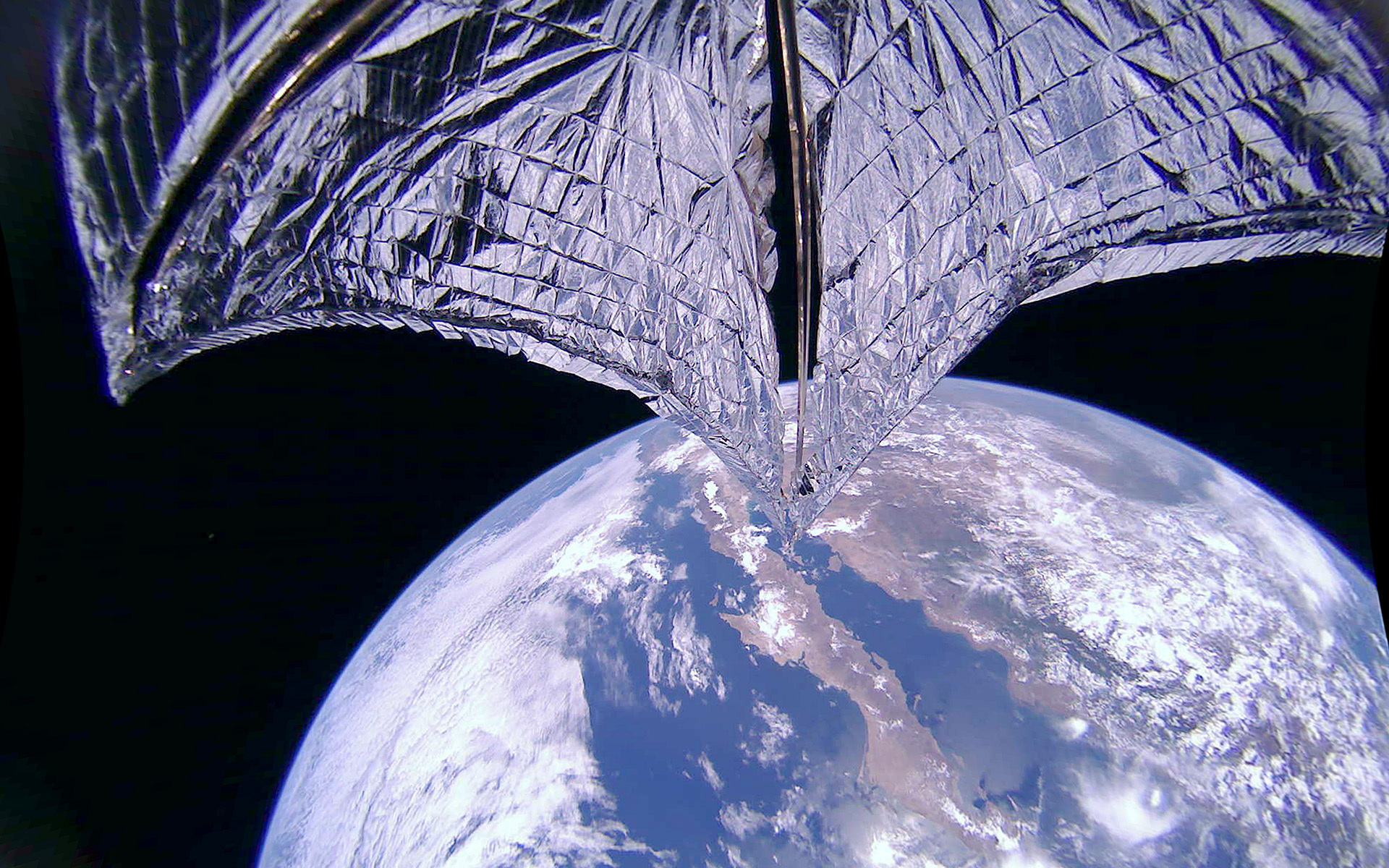International agreement with NASA in the field of solar sail missions
At the end of 2019, dean Henri Werij of the Faculty of Aerospace Engineering at TU Delft signed a cooperation agreement with NASA Langley Research Center. Over the next three years, we will combine our knowledge in the field of solar sailing in order to develop future mission concepts.
(photo made by Lightsail 2. Source: planetary.org)
Solar sails act as a propulsion mechanism for satellites. Through the reflection of sunlight on the solar sail, a force is exerted on the satellite. In this way, the satellite can build up an enormous amount of energy and speed and thus reach destinations that would otherwise not be (easily) reachable. Currently, a solar sail mission of The Planetary Society, LightSail-2, is flying in orbit around Earth and this mission has shown for the first time that solar sail technology can be used to change the orbit altitude.
In recent years, NASA LaRC has developed their own solar sail technology, mainly for CubeSat platforms. Meanwhile, Dr. Jeannette Heiligers of the Astrodynamics and Space Missions section of the Aerospace Engineering faculty has conducted research into the astrodynamics of solar sails. This knowledge is bundled within this collaboration, mainly to develop scientific missions with CubeSats that only become possible through solar sail propulsion. During the collaboration, NASA Langley will launch a "technology demonstrator" in orbit with a sail the size of +/-80m^2. Also planned for 2020-2021 is the launch of the first real scientific solar sail mission: NASA's NEA Scout mission to visit a near-Earth asteroid.
